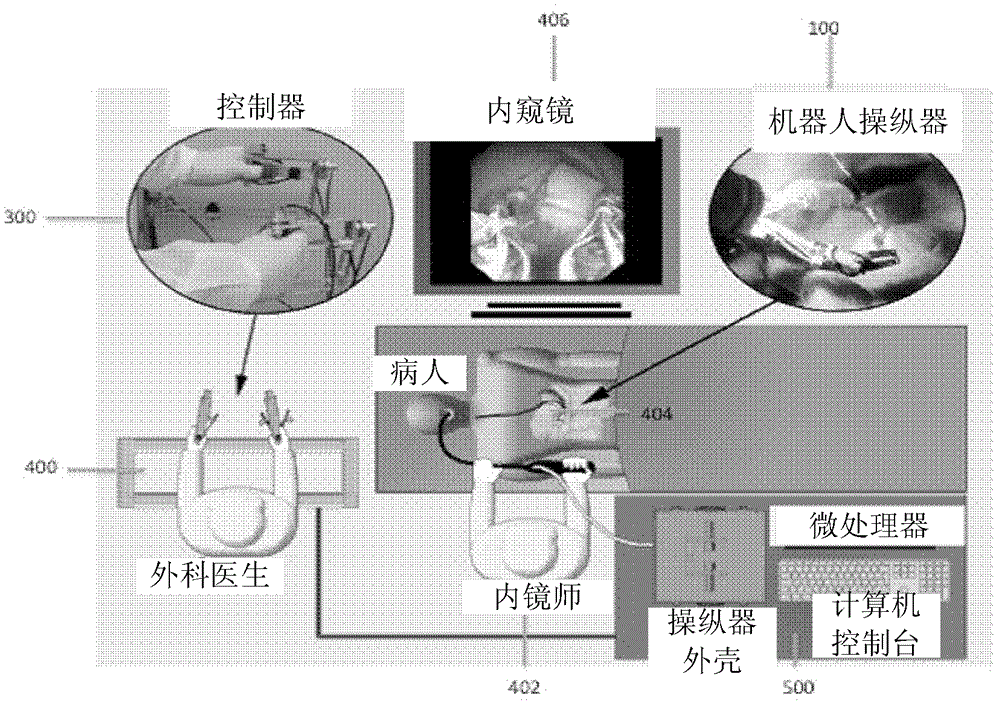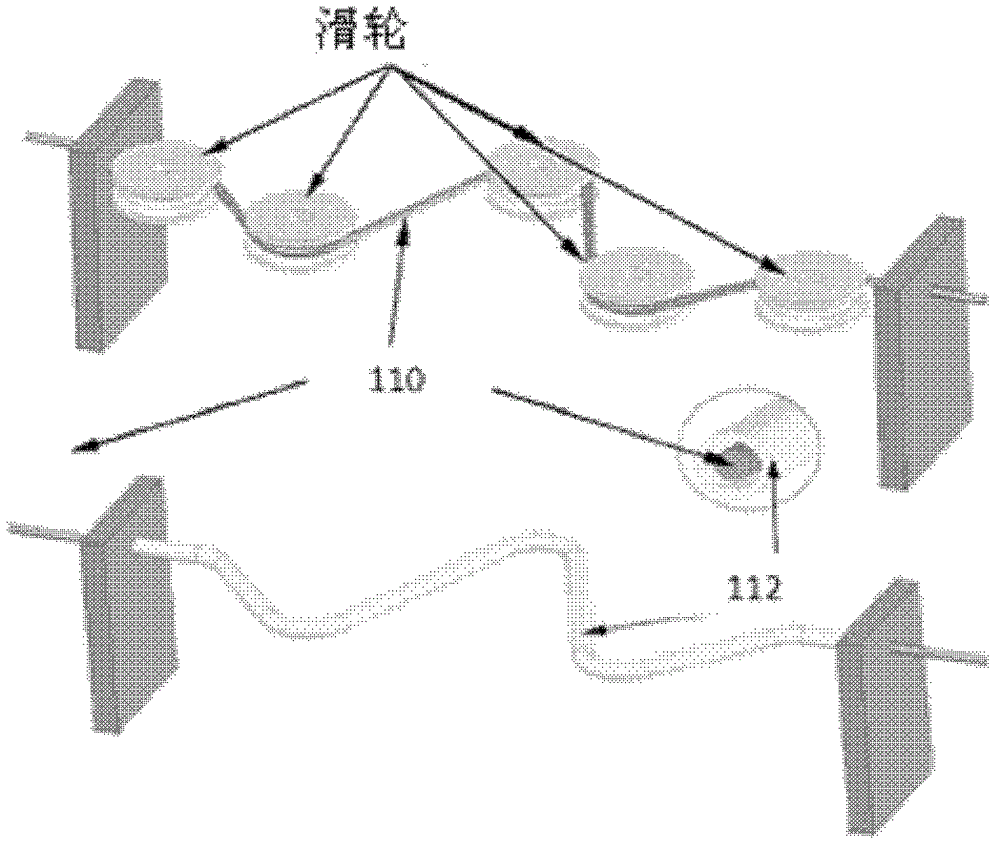Robotic system for flexible endoscopy
A technology of robots and endoscopes, applied in the field of robotic systems, can solve problems such as technical difficulties and shortages
- Summary
- Abstract
- Description
- Claims
- Application Information
AI Technical Summary
Problems solved by technology
Method used
Image
Examples
example 1
[0137] Each ESD in vivo in live animals was performed repeatedly using a conventional endoscope. MAIN OUTCOME MEASURES were: (i) time required to complete submembranous dissection of the entire lesion, (ii) dissection efficacy, (iii) completeness of lesion resection, and (iv) presence or absence of gastric wall perforation.
[0138] Submembranous dissection time can be defined as the time from activation of the endoscopic dissection surgical instrument to complete resection of the entire lesion. The assessment of dissection efficacy is based on two related task components - the score of the efficiency of grasping and excision of the tissue - and the scoring structure ranges from 0 to 2, where the lowest score of "0" indicates grasping / excision failure and the highest score of "2". ” indicates the most efficient grabbing / cutting. Similarly, completeness of lesion resection was scored on a scale of 0-3, where "0" indicated resection failure and "3" indicated complete resection ...
example 2
[0157] MASTER was first tested in transplanted pig stomachs before being tested in live animals. The purpose of the ex vivo test was to test the grasping and cutting performance of the system. The clamps must provide sufficient force to grasp and manipulate tissue, and the hooks must be able to cut at the intended tissue location. The trial also established teamwork and collaboration between endoscopists with more than 20 years of clinical experience and surgeons with less than 5 years of experience manipulating the controller. The results of 15 training sessions on transplanted tissue demonstrate the viability of the system to perform in real animals.
[0158] A wedge resection of the liver was chosen to test the feasibility of the system for NOTES. In vivo testing is performed at the Advanced Surgical Training Center at the National University Hospital of Singapore with the help of experienced endoscopists and surgeons. Using a controller and a robotic manipulator, the NO...
example 3
[0164]In order to successfully apply MASTER in NOTES, ESD was performed. Using the robotic manipulator, intensive trials were conducted to demonstrate the feasibility of the robotic system. With the help of an experienced endoscopist, 15 ex vivo ESDs, 5 in vivo ESDs and 2 in vivo NOTES were successfully performed in pigs. Before the experiment, surgeons practiced with isolated porcine stomachs to determine the necessary steps for ESD and NOTES. This also enables endoscopists to understand the capabilities and limitations of endoscopes and robots.
[0165] Since the prototype was only used on animals, the robot was temporarily cleaned thoroughly with soap, water and a brush, and then reused for additional trials. Future robotic manipulators could be designed to be disposable after a single use, ensuring effective sterilization for use on human patients.
[0166] ESD using MASTER
[0167] The final steps for robot ESD are given below. which provided Figure 16 is a real vi...
PUM
 Login to View More
Login to View More Abstract
Description
Claims
Application Information
 Login to View More
Login to View More - R&D
- Intellectual Property
- Life Sciences
- Materials
- Tech Scout
- Unparalleled Data Quality
- Higher Quality Content
- 60% Fewer Hallucinations
Browse by: Latest US Patents, China's latest patents, Technical Efficacy Thesaurus, Application Domain, Technology Topic, Popular Technical Reports.
© 2025 PatSnap. All rights reserved.Legal|Privacy policy|Modern Slavery Act Transparency Statement|Sitemap|About US| Contact US: help@patsnap.com



